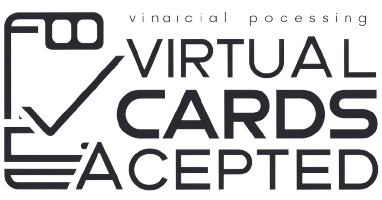Understanding Minimum Payments on Credit Cards
Credit card debt can quickly become overwhelming, especially when high interest rates cause minimum payments to balloon. Many people struggle to keep up with these payments due to financial hardships and the rising cost of living. Understanding how minimum payments work is crucial for managing credit card debt effectively.
What is a Minimum Payment?
A minimum payment is the smallest amount you’re required to pay each month to keep your credit card account in good standing. While making the minimum payment on time helps you avoid late fees and penalties, it’s important to realize that paying only the minimum can significantly extend the time it takes to pay off your balance.
Minimum payments are designed to cover the interest charges and a small portion of the principal balance. Credit card issuers calculate your minimum payment based on your current balance, interest rate, and any fees incurred during the billing cycle.
How Minimum Payments are Calculated
The exact formula for calculating minimum payments varies among credit card companies. However, it typically involves taking a percentage of your current balance (often between 1% and 3%) and adding any interest charges and fees incurred during the billing period.
For example, if your credit card balance is $5,000 with an 18% APR, and your issuer requires a 2% minimum payment, your minimum would be around $149 (2% of $5,000 principal plus approximately $49 in monthly interest charges). Your monthly billing statement will clearly list your minimum payment and the due date.
Impact of Paying Only the Minimum
While making minimum payments may seem like an easy short-term solution, it can have significant long-term consequences:
- Extended repayment period: Paying only the minimum means it will take much longer to pay off your balance, potentially extending the debt by years.
- More interest paid: The longer it takes to pay off your debt, the more interest you’ll accrue over time, greatly increasing the total amount repaid.
- Opportunity cost: Money spent on interest charges could be used for other financial goals, like saving or investing.
| Credit Card Balance | APR | Minimum Payment | Time to Pay Off | Total Interest Paid |
|---|---|---|---|---|
| $5,000 | 18% | 2% ($149) | 15 years, 4 months | $4,947 |
As the table shows, making only minimum payments on a $5,000 balance would take over 15 years to pay off and cost nearly as much in interest as the original balance. Aim to pay more than the minimum whenever possible to save money and get out of debt faster.
Strategies to Lower Your Minimum Payment
If you’re struggling to afford your minimum credit card payments due to financial hardship, several strategies can help lower your monthly obligation and get your debt under control.
Contacting Your Credit Card Issuer
Your first step should be to contact your credit card company and explain your financial situation. Many issuers offer hardship programs that can temporarily lower your interest rate or minimum payment. They may also waive certain fees or work with you to develop a more manageable repayment plan.
Be proactive in reaching out for help. Waiting until you’ve already missed payments can hurt your credit score and may limit the assistance available. Have a clear picture of your financial situation and a realistic idea of what you can afford to pay each month before you call.
Enrolling in a Debt Relief Program
If your credit card debt has become unmanageable, enrolling in a debt relief program may help you lower your monthly payments and get back on track. Debt management and debt settlement are two common options:
- Debt management involves working with a credit counseling agency to negotiate lower interest rates and monthly payments with your creditors. You make a single payment to the agency each month, which distributes the funds to your creditors.
- Debt settlement, also known as debt forgiveness, involves stopping payments to creditors and instead saving funds in a special account. When you’ve saved enough, the debt relief company negotiates with creditors to accept a lower lump sum payment to settle the debt.
Both options typically involve closing your credit card accounts, which can impact your credit utilization and credit score in the short term. However, the long-term benefits of paying off debt and establishing a more sustainable budget often outweigh these drawbacks.
Using a Balance Transfer Credit Card
If you have a good credit score, you may qualify for a balance transfer credit card with a 0% introductory APR offer. By transferring your existing credit card balances to this new card, you can temporarily avoid interest charges and potentially lower your minimum payment in the process.
Balance transfer offers typically last between 12 to 18 months, during which you can focus on paying down your principal balance without accruing new interest. Be aware that most cards charge a balance transfer fee (often 3% to 5% of the transferred amount) and will revert to a standard APR once the promotional period ends.
To make the most of a balance transfer, create a realistic repayment plan to pay off as much of the balance as possible before the introductory period expires. Divide your balance by the number of months in the intro period to determine your target monthly payment.
Debt Consolidation Options
Debt consolidation involves taking out a new loan to pay off multiple credit card balances, effectively combining them into a single monthly payment. Options include:
- Personal loans: These installment loans often have lower interest rates than credit cards, fixed repayment terms, and a set monthly payment that never changes.
- Home equity loans or lines of credit: If you own a home with equity, you may be able to borrow against that equity at a lower rate to pay off credit card debt. Just remember that your home secures the loan, so falling behind on payments could put your property at risk.
Consolidation works best if you’re committed to avoiding new credit card debt going forward. Continuing to charge purchases while paying off a consolidation loan can worsen your debt situation.
Additional Tips to Manage Credit Card Debt
In addition to exploring ways to lower your minimum payments, adopting healthy financial habits can help you take control of your credit card debt and avoid future hardship.
Making More Than the Minimum Payment
Whenever possible, pay more than the minimum due on your credit card bills. Even small additional payments can make a big difference over time by reducing your principal balance and the total interest you’ll pay.
Consider the “debt snowball” or “debt avalanche” methods to accelerate your progress. The debt snowball approach involves paying off your smallest balance first and then rolling that payment into your next-smallest balance. The debt avalanche method prioritizes paying off the card with the highest interest rate first. Both can help you build momentum and motivation as you see balances disappear.
Setting Up Automatic Payments
Missing credit card payments can lead to late fees, penalty APRs, and potential damage to your credit score. Set up automatic payments through your credit card issuer or bank to ensure you never miss a due date.
You can choose to automate the minimum payment to avoid late fees or set a higher amount to chip away at your balance faster. Just make sure you have enough funds in your linked bank account to cover the payment each month.
Seeking Nonprofit Credit Counseling
If you’re feeling overwhelmed by credit card debt and unsure of your next steps, consider seeking guidance from a nonprofit credit counseling agency. These organizations provide free or low-cost advice on budgeting, debt management, and financial planning.
A credit counselor can review your income, expenses, and debts to help you create a personalized action plan. They may also recommend a debt management program if you qualify. Look for a reputable agency affiliated with the National Foundation for Credit Counseling (NFCC) or the Financial Counseling Association of America (FCAA).
Avoiding Common Pitfalls
As you work to lower your credit card minimum payments and get your debt under control, watch out for these common mistakes that could derail your progress.
Beware of For-Profit Debt Relief Companies
While legitimate debt relief options exist, the industry is also rife with scams and misleading promises. Be wary of any company that:
- Guarantees to settle your debts for a fraction of what you owe
- Charges upfront fees before providing any services
- Tells you to stop communicating with your creditors
- Promises to improve your credit score quickly
Remember, if an offer sounds too good to be true, it probably is. Research any debt relief company thoroughly and read reviews from past clients before signing up for services.
Understanding the Impact on Your Credit Score
While lowering your credit card minimum payments can provide short-term financial relief, some strategies may negatively impact your credit score. Late payments, high credit utilization, and closing long-held accounts can all cause your score to drop.
However, the effects are usually temporary, and getting your debt under control will serve your credit and overall financial health in the long run. As you consistently make on-time payments and reduce your balances, you should see your score gradually improve.
Maintaining Communication with Lenders
If you’re struggling to make your credit card payments, don’t ignore the problem or avoid communicating with your creditors. Missed payments can quickly snowball into default, making it even harder to regain control of your finances.
Keep your credit card issuers informed about any financial hardships you’re experiencing. They may be willing to work out alternative payment arrangements, waive certain fees, or offer temporary forbearance to help you weather a difficult period. The key is to be proactive, honest, and willing to work toward a resolution.
See also:
- How Is Credit Card Minimum Payment Calculated? Understanding the Process
- How to Pay Car Payment with Credit Card: A Complete Guide
- What Happens If I Miss a Credit Card Payment? Find Out Now
- When is a Credit Card Payment Considered Late? Find Out Now
- How to Clear Negative Balance in Bank Account: Step-by-Step Guide






